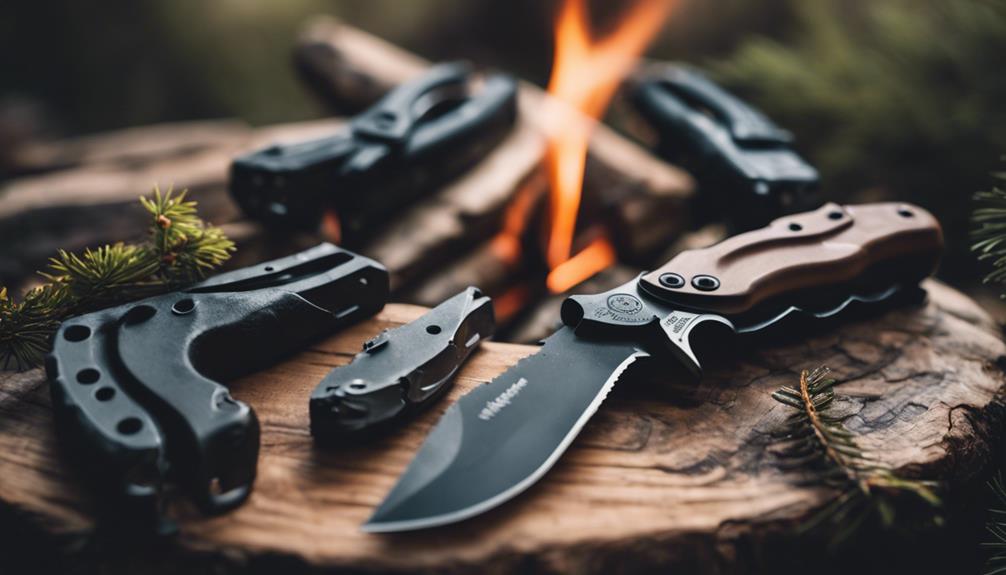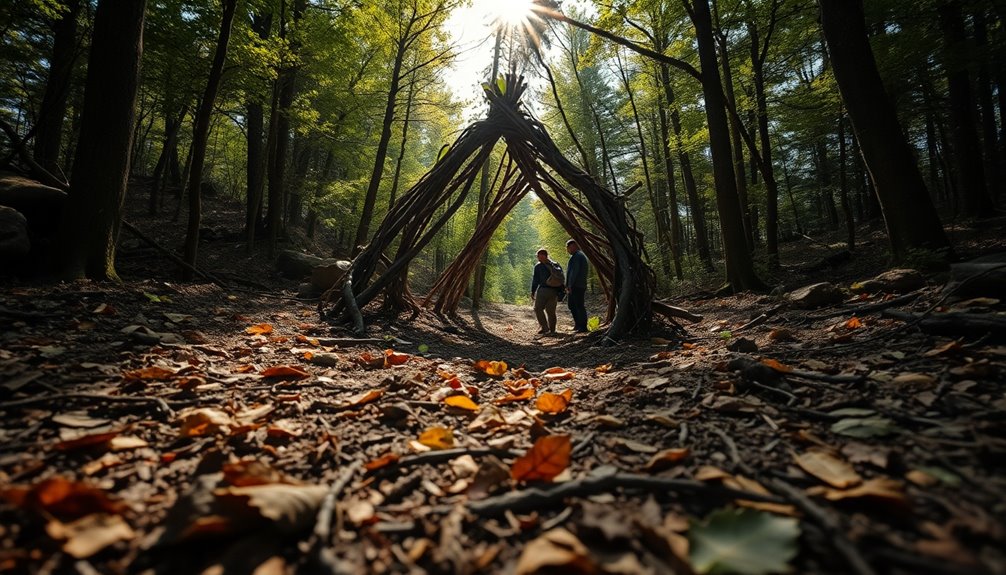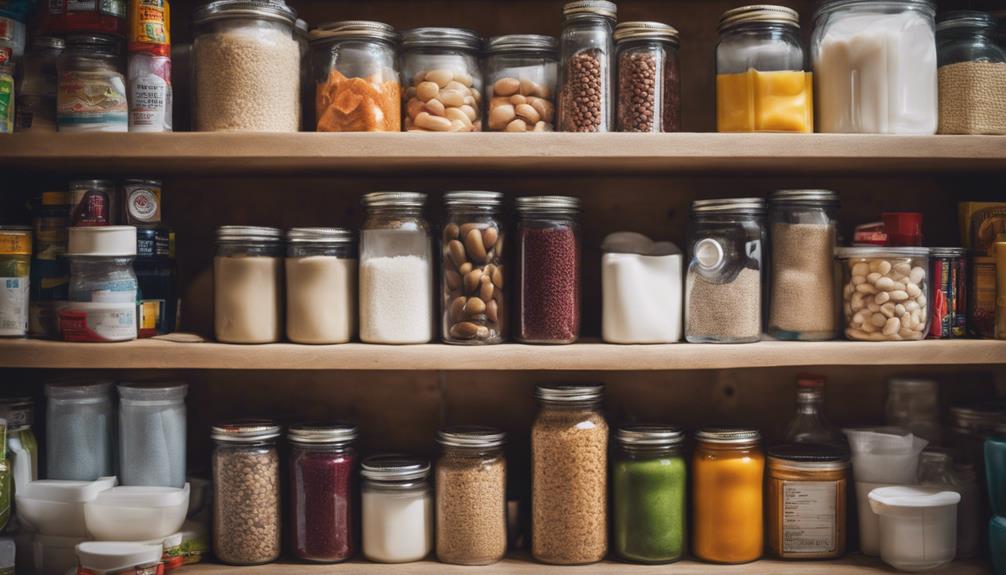Choosing your ultimate survival knife wisely can make all the difference in an emergency. Opt for a fixed blade design for strength and durability. Look for a full tang construction that provides stability during tough tasks. Avoid hollow handle knives and flashy features that distract from functionality. Ideally, find a versatile knife that excels in both food prep and self-defense. Remember the importance of knowing local knife laws to guarantee compliance. A reliable survival knife not only serves multiple roles but also boosts your confidence. Stick around to discover more essential tips for making the best choice. When selecting your ultimate survival knife, consider the blade material as well. High-quality stainless steel or carbon steel blades offer excellent strength and corrosion resistance. Additionally, a knife with a textured handle for a secure grip in all conditions is a great choice for ultimate survival. Remember, the right survival knife can be a vital tool in emergencies, so choose wisely to ensure your safety and preparedness in any situation.
Key Takeaways
- Opt for a fixed blade knife for durability and strength, ensuring reliability in survival situations.
- Consider full tang construction for enhanced stability during heavy use and demanding tasks.
- Choose high-grade steel blades that maintain sharpness and resist corrosion for long-lasting performance.
- Avoid overly complicated designs and large knives; prioritize versatility and practicality for everyday tasks.
The Importance of a Single Knife
Having a single, reliable knife can greatly enhance your survival experience by serving multiple essential roles, from food prep to self-defense.
In emergency situations, you want a tool that's versatile and dependable. A well-chosen knife allows you to tackle various tasks, such as building shelter, preparing food, and protecting yourself if necessary.
This minimalist approach reflects historical practices, emphasizing that having just one quality knife is often more effective than carrying several specialized tools.
A fixed blade knife, in particular, offers durability and strength, ensuring it withstands the rigors of survival situations.
Ultimately, the psychological comfort of knowing you have a dependable tool can considerably boost your confidence and readiness when facing unexpected challenges.
Key Design Features to Consider
When selecting a survival knife, understanding the key design features can make all the difference in guaranteeing its reliability and effectiveness in critical situations.
First, consider a fixed blade design, as it offers durability and strength. Look for a full tang construction, which enhances the knife's stability during heavy use.
Blade thickness is also vital; a thicker blade will support prying and splitting tasks. Don't overlook the quality of materials—high-grade steel is essential for maintaining a sharp edge and resisting corrosion.
Additionally, confirm the knife's versatility; it should perform well in various roles, from food preparation to self-defense.
Common Knife Selection Mistakes

Many people make essential mistakes in knife selection that can compromise their survival readiness.
One common error is choosing a hollow handle knife, which often proves unreliable in critical situations.
Another pitfall is opting for overly complicated designs, as they can hinder usability when every second counts.
Many also fall for the allure of large knives, which usually lack practicality for everyday tasks.
Don't get swayed by flashy marketing or brand names; focus on functionality and quality instead.
Finally, avoid single-purpose knives that limit versatility.
By steering clear of these mistakes, you'll enhance your chances of selecting a knife that truly meets your survival needs.
Top Survival Knife Models
Exploring the top survival knife models reveals a range of options that balance functionality, durability, and versatility for emergency situations. When choosing your knife, consider these standout models:
- Ka-Bar Becker BK2: Known for its robust design, this fixed blade excels in heavy-duty tasks.
- Morakniv Companion: Affordable yet effective, it's great for everyday use and outdoor activities.
These knives not only meet practical needs but also reflect a blend of historical significance and modern design.
Each model offers unique strengths, ensuring you'll find one that suits your specific survival requirements.
Community Resources for Knife Enthusiasts

Finding community resources for knife enthusiasts can greatly enhance your knowledge and skills in selecting and using the right survival knife.
Engage with online platforms like prepper.com, where you can share experiences and learn from fellow survivalists.
Join forums dedicated to knife discussions, allowing you to ask questions and receive valuable feedback.
Don't overlook the wealth of articles covering survival tactics and gear, which can deepen your understanding of knife features.
Attend local meetups or workshops to network with other enthusiasts and practice knife techniques.
Utilize social media groups to stay updated on trends and recommendations.
Legal Considerations for Knife Ownership
Understanding the legal considerations surrounding knife ownership is essential for ensuring you stay compliant while enjoying your survivalist pursuits. Laws can vary greatly based on where you live, so it's vital to familiarize yourself with local regulations.
Here are some key points to keep in mind:
- Blade Length Restrictions: Many areas have laws specifying maximum blade lengths for knives.
- Types of Knives: Certain types, like switchblades or gravity knives, may be illegal in your jurisdiction.
Tips for Responsible Knife Use

When using a survival knife, always prioritize safety by handling it with care and making sure it's stored properly when not in use.
Keep the blade sharp; a dull knife requires more force, increasing the risk of accidents. Always cut away from your body and maintain a firm grip to prevent slips.
Be mindful of your surroundings and avoid using your knife as a tool for tasks it's not designed for. Clean your knife regularly to prevent rust and make certain it's ready for action.
Frequently Asked Questions
How Do I Maintain My Survival Knife Effectively?
To maintain your survival knife effectively, clean it regularly with soap and water, dry it thoroughly, and apply oil to prevent rust. Sharpen the blade as needed, ensuring it stays ready for any situation.
What Is the Best Way to Sharpen a Knife?
Did you know that a dull knife is more dangerous than a sharp one? To sharpen your knife, use a whetstone at a 20-degree angle, maintaining consistent pressure for an effective edge and ideal performance.
Can I Use a Survival Knife for Everyday Tasks?
Yes, you can use a survival knife for everyday tasks. Its versatility allows you to handle cooking, camping, and light-duty tasks easily, making it a practical tool for daily use beyond just survival situations.
What Materials Are Best for Knife Handles?
You might think any handle will do, but a durable grip made from materials like G10 or Micarta guarantees comfort and control. After all, you don't want your knife slipping when you need it most!
How to Choose a Knife Based on Climate Conditions?
When choosing a knife, consider your climate. In wet environments, opt for corrosion-resistant materials, while cold climates benefit from insulated handles. Always guarantee your knife's grip remains secure, regardless of weather conditions you might face.
Conclusion
Choosing your ultimate survival knife is like picking a trusted companion for life's adventures.
By focusing on durability, versatility, and smart design, you'll guarantee you're well-equipped for any challenge that arises.
Avoid common pitfalls and arm yourself with knowledge as you explore top models and community resources.
With the right knife by your side, you'll feel a surge of confidence, ready to tackle emergencies head-on.
So, gear up and embrace the journey ahead!










